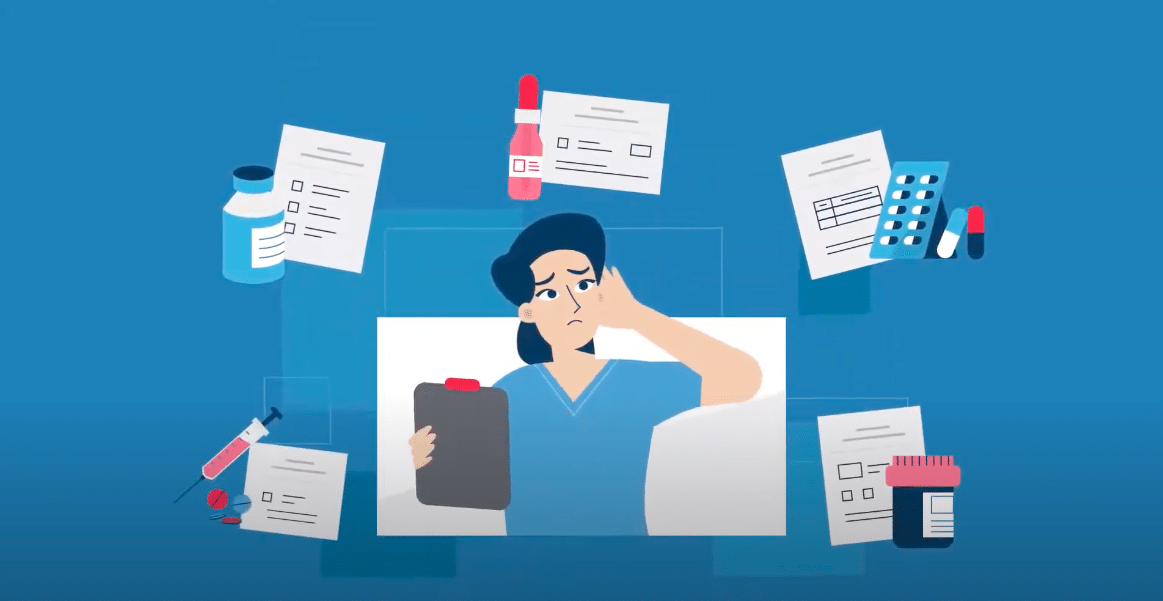15 Different Types Of Explainer Videos

Through visual metaphors, quirky character designs, and expertly-paced narrative, an explainer video simplifies challenging subjects and makes them memorable. Developers, entrepreneurs, marketers, and other business professionals utilise various styles of explainer videos to introduce offerings, demonstrate processes, bring concepts to life, and make a lasting impact on viewers.
Let’s explore the most popular explainer video styles:
Traditional 2D Motion Graphics
Traditional 2D motion graphics dominate the explainer video realm. This style utilises flat 2D illustrations, icons, typography, shapes, and container elements brought to life through motion and transitions. Animated characters may guide viewers through concepts step-by-step as infographics pop on screen to visually illustrate complex data insights.
These videos allow video production studios to include lots of details at a rapid pace thanks to easily-animated elements. The art style can be simple, clean line drawings or adopt any aesthetic through illustrated and photographic compositing. Traditional 2D motion graphic videos work well for product or service demonstrations, presentations of data trends, introducing complex workflows, and more.
Common program choices for 2D motion graphics production include Adobe After Effects, Animate, and Illustrator or animation tools like Toon Boom Harmony. This versatile style fits any industry’s explanatory needs through creative compositions. Tech startups especially love this medium. Example video
Whiteboard Animation
Whiteboard animation delivers explainer video content through hand-drawn sketches on a whiteboard backdrop. Instead of sleek computer animations, whiteboard-style content evokes a teacher drawing concepts in real-time for students. It feels intimate yet visually captivating as the illustration happens spontaneously.
Seamless transitions, layered revealing elements, fun handwriting fonts, and low-fidelity artwork give whiteboard animation widespread appeal. The imperfect nature provides an engaging alternative to overly slick graphics. These videos work well for corporate messaging, leadership vision statements, entrepreneurial product launches, training modules etc.
Tools like Videoscribe and Sparkol specialise in whiteboard media production. But it also remains possible to fake the style through any 2D or frame-by-frame animation software. The right audio narration further adds to the whiteboard video’s depth.
Character Animation
Character animation crafts lovable mascots who walk viewers through key talking points. These personalities allow creators to convey information through character-driven actions and humour. A cute robot demonstrating how software works or an explorer mapping company values through a jungle make dry topics exciting.
Well-designed mascots earn big returns on investment as marketing tools. They boost brand recognition across videos, advertising, digital spaces and internal communications. Animation styles can vary from simple 2D Flash puppets to elaborate 3D renders for character videos. The friendly caricatures and storytelling opportunities allow brands to connect with audiences on emotional level.
Stop Motion
Stop motion animation conjures DIY charm by bringing everyday objects to life through frame-by-frame adjustments. Clay figurines, paper cutouts, legos and toys are captured incrementally to create illusions of movement. It’s a tangible technique adding tactile intimacy despite digital rendering for final playback.
That handcrafted feel makes stop motion a great fit when explaining processes tied to physical goods. For example, manufacturing production lines, cooking techniques, crafting methods, board/video games, and more. Brands lean into the nostalgic visual style as well for a distinct look compared to other animation forms.
Live Action Motion Graphics
While animation dominates explainer media, live action offers benefits through its realistic presence. Talking interviews, product demos, and company tours immerse viewers in identifiable environments with natural personality. Motion graphics complement these scenes with layered b-roll footage, dynamic infographics, stylized text layouts and other embellishments.
Blending real people, places and things creates great cinematic results. Healthcare/medical tutorials use the technique to showcase gear in clinical settings through engaging graphics. Financial investor reels take similar approaches highlighting real-world experts alongside animated diagrams explaining investment products.
You can use different animation software tools for creating the above explainer videos. Besides the above, there are several more types of explainer videos.
3D Animation: 3D animation adds depth and realism to explainer videos by creating three-dimensional objects and environments. Animation studios use this for showcasing intricate product details and lifelike simulations.
Screencast: Screencast videos capture on-screen actions, making them perfect for software tutorials and demonstrations. Viewers can follow along step-by-step.
Infographic: Infographic videos use visually compelling charts, graphs, and images to explain complex data or concepts in a concise and engaging manner.
Testimonial: Testimonial explainer videos feature satisfied customers sharing their experiences with your product or service. They build trust and credibility.
Tutorial: Tutorial videos provide comprehensive step-by-step instructions for learning a new skill or completing a specific task. They are educational and practical.
Product Demo: Product demo videos showcase a product’s features, benefits, and usage in real-world scenarios. They help potential customers understand how your product can solve their problems.
Typography Animation: Typography animation focuses on animated text and typography to convey messages creatively. It’s often used for branding and promotional purposes.
Educational Animation: Tailored for academic purposes, educational animations simplify complex topics and engage students in a visually appealing way.
Interview-style: Interview-style explainer videos feature experts or thought leaders discussing a topic or product, providing valuable insights and information.
Vlog-style: Vlog-style explainer videos involve a host sharing insights, experiences, or knowledge on various subjects, offering a personal and informal approach to explanations.
Learn more about Keyframing and rigging or jump to storyboard and concept art.